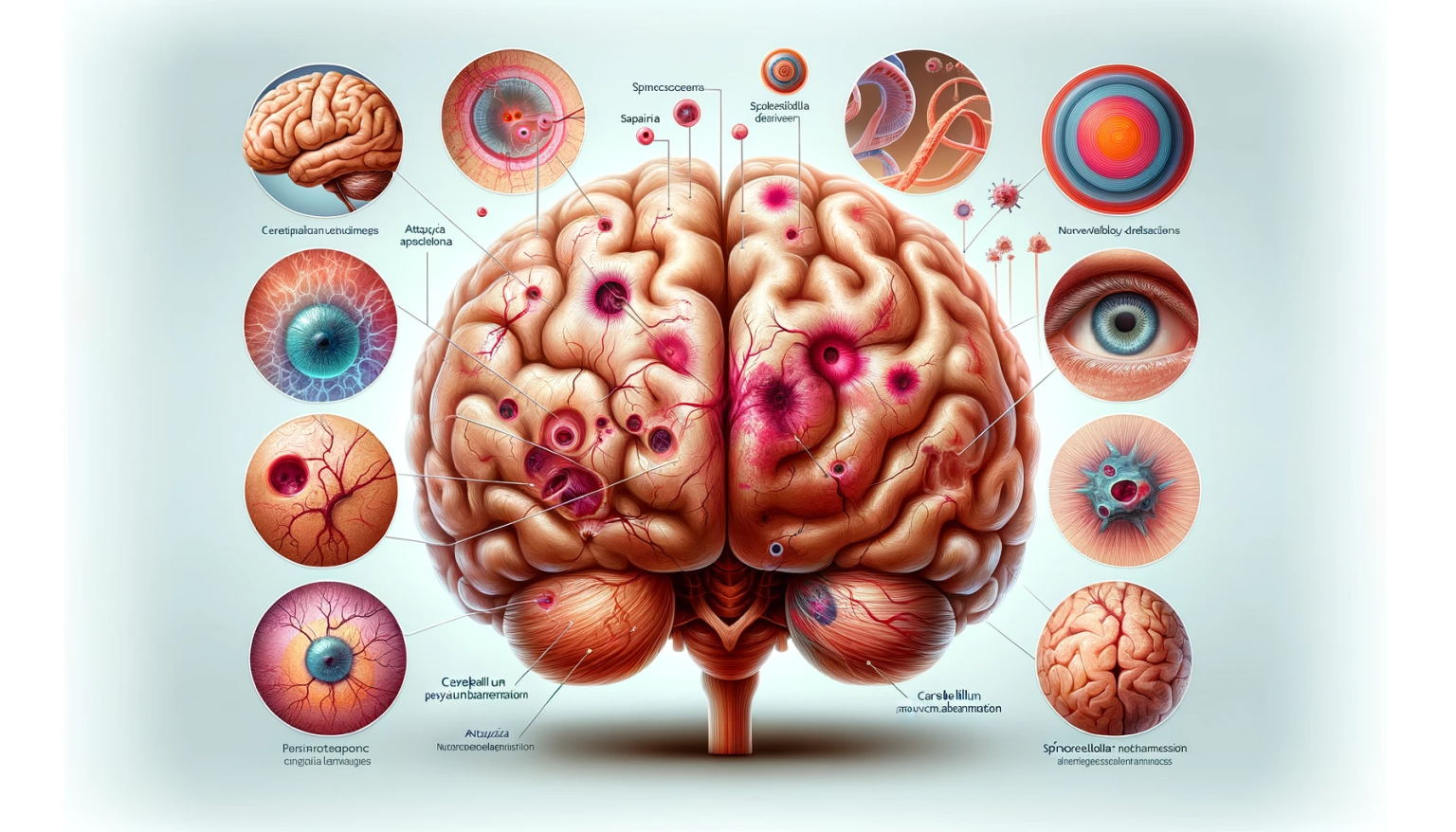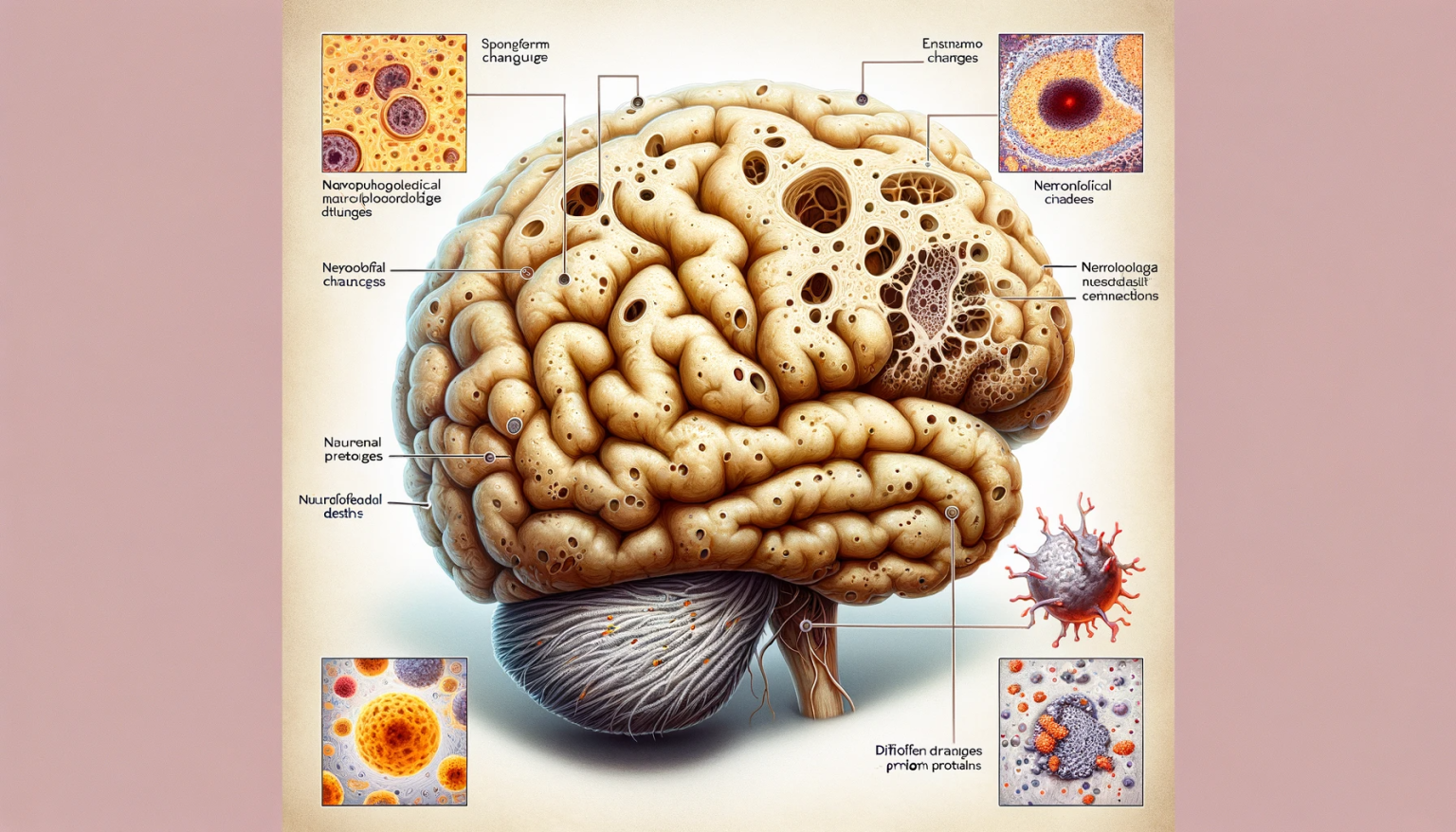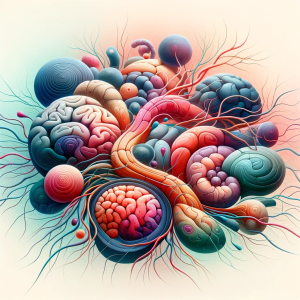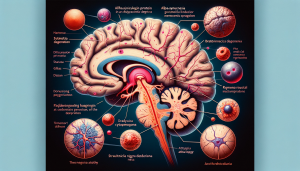
Convergence Insufficiency: The Strain of Alignment
Convergence insufficiency, a prevalent binocular vision disorder, is marked by a decreased ability to converge the eyes effectively during near-vision tasks, such as reading. This condition necessitates a repetitive, laborious effort to align both eyes for each word during reading, which can lead to persistent strain on the ocular convergence system. Individuals afflicted by convergence insufficiency often experience a cycle of stress and microadjustments in eye alignment, as their visual system struggles to maintain alignment. This chronic neuromuscular demand not only challenges the visual system but also sets the stage for further neuro-ophthalmic complications, making it a pivotal concern in ophthalmology and neurology. As such, understanding the intricate mechanisms behind convergence insufficiency is essential for comprehensive patient care.
Trigeminal Dysphoria: Beyond Eye Strain
Trigeminal dysphoria emerges as a response to prolonged visual strain and discomfort, often stemming from conditions like CI. It manifests as an array of symptoms including ocular discomfort, increased sensitivity to light (photophobia), and recurrent headaches. The condition implicates the trigeminal nerve, which is integral in transmitting sensory information from the face to the brain. The dysphoria is believed to be due to the overstimulation of the trigeminal nerve pathways, caused by the continuous strain and effort in maintaining visual focus.
Linking CI and Trigeminal Dysphoria
The intricate interplay between visual and sensory systems underscores the association between Convergence Insufficiency (CI) and Trigeminal Dysphoria. CI, characterized by an inability to efficiently align the eyes during near-vision tasks, imposes strain on the extraocular muscles and neural pathways. These micro-adjustments in eye alignment challenge the trigeminal nerve, leading to symptoms like ocular fatigue, persistent headache, and dry eyes, exacerbated by digital device use or reading. Sensory disturbances from the trigeminal nerve can also cause referred pain to the mouth and orofacial region, contributing to Trigeminal Dysphoria’s multifaceted symptomatology. This neural relationship highlights the need for a comprehensive understanding to explore potential therapeutic avenues.
Trigeminal Neuropathy: Understanding the Condition
Trigeminal Neuropathy is a neurological disorder characterized by dysfunction of the trigeminal nerve, which supplies sensory innervation to the face and plays a vital role in craniofacial sensation. This condition can result from various etiologies, including nerve compression, inflammation, trauma, or idiopathic causes. Patients with Trigeminal Neuropathy often experience excruciating facial pain, which can be triggered by routine activities such as eating, talking, or even exposure to gentle stimuli like a breeze. The intensity and location of pain can vary, encompassing the mandibular, maxillary, and ophthalmic divisions of the trigeminal nerve. Proper diagnosis and management are essential to alleviate suffering and improve the patient’s quality of life.
Progression to Trigeminal Neuropathy: Complex Pathophysiology
The progression from Trigeminal Dysphoria to Trigeminal Neuropathy involves a complex pathophysiological process. Dysphoria, often stemming from convergence insufficiency, initiates discomfort in the periocular and craniofacial regions. This discomfort leads to recurrent ocular realignments during near-vision tasks, straining the ocular motor system. Chronic strain, coupled with heightened neurosensory processing, sensitizes the trigeminal nerve, making it prone to neural insult. This heightened excitability may result in paroxysms of severe pain, characteristic of Trigeminal Neuropathy. While not universal, understanding this progression is crucial for timely intervention and neuroprotective strategies.
Characteristics of Post-Dysphoria Trigeminal Neuropathy
Post-Dysphoria Trigeminal Neuropathy, an exceptionally rare neurological disorder, is characterized by a complex symptomatology that transcends ocular discomfort. This condition is marked by a persistent, basal level of pain, which notably exacerbates and persists for extended periods following visual tasks like reading or intense ocular focus. The pain, originally localized in the ocular region, notably radiates to encompass the maxillary and mandibular regions, reflecting the extensive distribution of the trigeminal nerve. These areas, integral to facial sensation and function, experience heightened sensitivity and discomfort. The intensification of pain with visual strain highlights the intricate link between visual system demand and trigeminal nerve aggravation. Given the scarcity of this condition, patient reports are not widespread; however, those affected describe the sensation during visual tasks as comparable to a tangible abrasion of the eye, with the severity and persistence of the pain being remarkably prolonged and debilitating.
Bilateral Presentation
The bilateral presentation observed in Post-Dysphoria Trigeminal Neuropathy (PD-TN) is distinctive when juxtaposed with unilateral patterns often seen in other neuropathic conditions. This unique characteristic in PD-TN can be attributed to the intricate neurophysiological intricacies within the trigeminal nerve pathways. In the milieu of PD-TN, a convergence of multifaceted factors, including ocular stress, neuromuscular demands, and heightened neural sensitization, culminates in an aberrant symmetrical manifestation. This distinctive bilateral trait of PD-TN can be decoded by delving into the labyrinthine complexities of trigeminal nerve circuitry, where sensory information from both facial hemispheres intricately converges. Thus, the bilateral predilection of PD-TN emerges as an exceptional phenomenon amidst the landscape of neuropathic disorders.
Central Sensitization and Widespread Pain
If left untreated, Post Dysphoria Trigeminal Neuropathy can progress to a more severe stage involving central sensitization. Central sensitization is a phenomenon where the central nervous system becomes hypersensitive to pain signals, leading to heightened pain perception. As a result, the pain experienced by individuals with this condition can extend beyond the trigeminal nerve distribution, affecting various parts of the body. This widespread pain can significantly impact a patient’s quality of life, making early intervention and treatment essential to prevent its progression.








